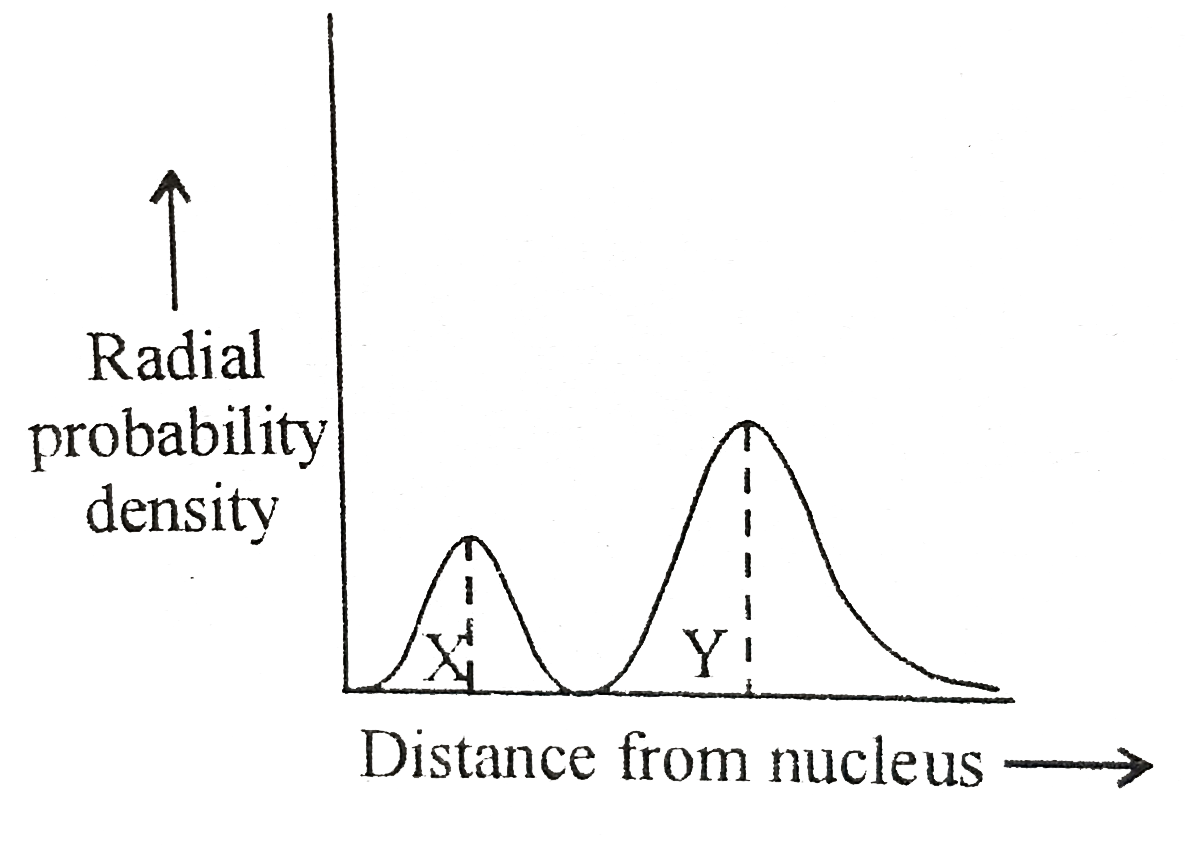Complete Solutions to Illustrations of Objective Question of chapter ATOMIC STRUCTURE of Class 11 book with complete answers and questions
| Class 11 | CHEMISTRY |
| Chapter | ATOMIC STRUCTURE |
| OP TANDON | Illustrations of Objective Question |
| Number Of Questions | 33 |
| Academic Year | 2023-24 |
The frequency of the rations having wave number `10m^(-1)` is:
View SolutionThe energy of a photon of radiation having wavelength 300 nm is,
View SolutionThe maximum kinetic energy of the photoelectrons is found to be `6.63xx10^(-19)J`, when the metal is irradiated with a radiation of frequency `2xx10^(15)`Hz. The threshold frequency of the metal is about:
View SolutionThe number of photons of light having wavelength 100 nm which can provide 1 J energy is nearly:
View SolutionThe atomic transition gives rise to the radiation of frequency `(10^(4)HMz)`. The change in energy per mole of atoms taking place wiould be:
View SolutionThe maximum kinetic energy of photoelectrons ejected from a metal, when it is irradiated with radiation of frequency `2xx10^(14)s^(-1)` is `6.63xx10^(-20)`J. the threshold frequency of the metal is:
View SolutionIf `lamda_o and lamda` be the threshold wavelength and wavelength of incident light , the velocity of photoelectron ejected from the metal surface is :
View SolutionA radiation of wavelength `lamda` illuminates a metal and ejects photoelectrons of maximum kinetic energy of 1eV. Aother radiation of wavelength `(lamda)/(3)`, ejects photoelectrons of maximum kinetic energy of 4eV. What will be the work function of metal?
View SolutionThe ratio of slopes of `K_(max)` vs. V and `V_(0)` vs. v curves in the photoelectric effect gives (v= freqency. `K_(max)`= maximum kinetic energy, `V_(0)`=stopping potential) :
View SolutionGround state energy of H-atom is `(-E_(1))`,t he velocity of photoelectrons emitted when photon of energy `E_(2)` strikes stationary `Li^(2+)` ion in ground state will be:
View SolutionThe work functions `(W_(0))` of K, Na, Li, Mg and Cu are 2.25,2.30,2.42,3.70 and 4.80 eV respectively. How many of these metals do not undergo photoelectric effect when a radiation of wavelength 450 nm is allowed to fall on them? `(1eV=1.602xx10^(-19)J)`
View SolutionIf the speed of electron in first Bohr orbit of hydrogen be 'x' then speed of the electron in second orbit of `He^(+)` is
View SolutionIf first ionisation energy of hydrogen be `E`, then the ionisation energy of `He^+` would be :
View SolutionThe number of spectral lines that are possible when electrons in 7th shell in different hydrogen atoms return to the 2nd shell is:
View SolutionThe ratio of radii of first orbits of H, `He^(+)` and `Li^(2+)` is:
View SolutionThe energy of second orbit of hydrogen is equal to the energy of ,
View SolutionWhat is the energy in eV requried to excite the electron from n=1 to n=2 state in hydrogen atom? (n=principal quantum number)
View SolutionAn electron in an atom jumps in such a way that its kinetic energy changes from x to `x/4`. The change in potential energy will be:
View SolutionIf the kinetic energy of an electron is increased 4 times, the wavelength of the de Broglie wave associated with it would becomes:
View SolutionThe mass of photon having wavelength `1 nm` is :
View SolutionThe de Broglie wavelenth of `1 mg` grain of sand blown by a `20 m s^-1` wind is :
View SolutionIn an atom, an electron is moving with a speed of ` 600 m//s` with an accuracy of ` 0.005%` . Certainty with which the position of the electron can be localized is :
` ( h = 6.6 xx 10^(-34) kg m^2 s^(-1)` ,
mass of electron ` (e_m) = 9. 1 xx10^(-31) kg)`.
View SolutionVelocity of de Broglie wave is given by :
View Solution
If the above radial probaility curve indicates '2s' orbital, the distance between the peak points X& Y
is
View Solution
Plots for 2s orbital are
X, Y and Z respectively.
View SolutionThe Wave function (Psi) of 2s is given by:
`Psi_(2s)=(1)/(2sqrt2pi)(1/a_(0))^(1//2){2-(r)/a^(0)}e^(-r//2a_(0))`
At `r =r_(0)`, radial node is formed . Thus for 2s `,r_(0),` in terms of `a_(0)` is-
View SolutionThe wave function for 1s orbital of hydrogen atom is given by:
`Psi_(1s)=(pi)/sqrt2e^(-r//a_(0))`
Where, `a_(0)`= Radius of first Bohar orbit
r= Distance from the nucleus (Probability of finding the ekectron varies with respect to it)
What will be the ratio of probability of finding rhe electron at the nucleus to first Bohr's orbit `a_(0)`?
View SolutionThe radial wave equation for hydrogen of radial nodes from nucleus are:
`Psi_(1s)=(1)/(16sqrt(4))(1/a_(0))^(3//2) [("x"-1)("x"^(2)-8"x"+12)]e^(-x//2)`
where, `x=2r//a_(0),a_(0)` = radius of first Bohr orbit
The minimum and maximum position of radial nodes from nucleus are:
View SolutionThe orbital angular momentum of an electron in a d-orbital is:
View SolutionWhich of the following sets of quantum numbers is correct for an electron in 4 f-orbital?
View SolutionMatch the List -I and List-II and select the correct set from the following sets given below:
`{:((A)." The number of sub-energy levels in an energy level",(1)." "n^(2)),((B)." The number of orbitals in a sub-energy level",(2)." "3d),((C)." The number of orbitals in an energy level",(3)." "2l+1),((D)." n=3,l=2,m=0",(4)." "n):}`
View SolutionWhich of the following is not possible?
View SolutionWhat is the maximum number of electron in an atom that can have the quantum numbers `n = 4, m_(l) =+1`?
View Solution
Illustrations of Objective Question questions and complete solutions for chapter ATOMIC STRUCTURE of G.R. BATHLA & SONS CHEMISTRY (HINGLISH) of Class 11
All Exercises from OP TANDON Class 11 CHEMISTRY ATOMIC STRUCTURE
- Assertion Reason
- Example
- Illustrations of Objective Question
- Integer Answer Type Questions
- Integer Type Question
- Linked Comprehension Type Question
- Matrix matching Type Question
- Miscellaneous Numerical Examples
- Objective Question Level-B
- Practice Problems
- Questions with single correct Answer
- Self Assement
- Set-2
- Solved Examples
- Some Solved Examples